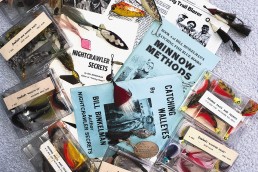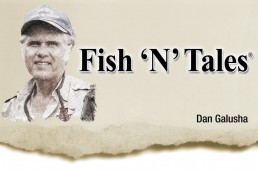Bill Lowen Winter Fishing Tips
SHARE THIS POST
Three lures, defined spaces, slower speeds mean more bass for you
Bassmaster Elite Series veteran, Bill Lowen, has earned nine Bassmaster Classic berths, 14 top 10 finishes, finished in the money 88 times and cashed checks for over $1 million. Here are some of his thoughts on catching bass in the winter.
Bill Lowen enjoys cold, frigid days on the water because he knows bass will be in well-defined areas they use year after year. They also hit one of his three favorite lures, and, by day’s end, he and his companions may have caught and released as many as 100 fish.
That does not sound like a normal winter fishing trip, but, through years of experience, he has learned how to tempt largemouth, smallmouth and spotted bass into biting. During a full day of fishing, he usually catches walleyes, stripers, white bass and other species, as well.
Bill Lowen says to go slow
“The real key to catching winter bass is slowing down on your presentation,” emphasizes Lowen. “At this time of year, fish simply do not chase lures very far. But, they will come to a lure if you can leave it in their strike zone. The biggest problem fishermen have in not catching fish in cold water is that they’re fishing too fast.”
That is why Lowen has learned to identify specific places where bass tend to set up during the winter. He concentrates on channel swings, riprap, bluff ends, bridge abutments, grass lines and the mouths of creeks, and he works water from 6 to just 12 or 15 feet deep. “These are the places all types of fish, including forage like shad and bluegills, use, and they’ll move to the very same places year after year,” he says. “Once you find an area like this, you seldom have to move your boat very much, because the fish won’t move. They’ll all be there, so you’ll generally catch a mixed bag.”
Three favorite lures
Lowen’s three favorite winter lures are a jig, a blade bait and a suspending jerkbait. He knows other lures will catch winter bass, but these three are not only effective, but also easy for anglers to use. Lowen fishes them all in the same areas, too.
“Each of these three lures can be fished slowly, too,” he adds. “I like to use a 5/16 ounce jig, and I just crawl it along the bottom. Sometimes, I’ll leave it motionless in one spot 20 to 30 seconds before moving it again. That is the most difficult aspect of winter fishing an angler has to learn. Instead of casting shallow and hopping the jig down into deeper water, you have to crawl it slowly with a lot of long pauses.”
Are you enjoying this post?
You can be among the first to get the latest info on where to go, what to use and how to use it!
Bill Lowen fishes a blade bait much the same way, casting shallow and slowly bringing the lure into deeper water. He uses a one-half ounce model he makes himself from components he orders. Blade baits attract bass through their vibrations. So, Lowen raises his rod tip slowly until he feels the lure vibrate, then lets it fall back to the bottom. It is a type of slow-motion hop, with a long pause before he raises his rod tip again.
Jerkbait tactics
The suspending jerkbait is not fished right on the bottom. Rather, it’s fished with a sequence of jerks that take the lure down. Then, stop so the jerkbait remains relatively motionless near the bottom. This is the most difficult of his three lures to fish. Lowen regularly lets the lure suspend for half a minute or more before jerking it forward again. “Bass will hit each of these lures if you fish them slowly,” concludes Lowen. “The actual water temperature doesn’t determine which lure I’ll use, but, on any given day, one of these three usually out-performs the other two.
“I can’t remember all the days I’ve had on the water when I’ve caught more than 50 fish using them. When my father or brother-in-law have joined me, we’ve caught more than a hundred. The hard part is just making yourself fish the lures slower than at any other time of year. Slower than you probably want to fish them.”
Wherever you fish, stay safe
Anglers in Illinois and Missouri have the option to fish their state’s warm water discharge lakes throughout much of the winter. Illinois has several. A partial list includes Braidwood, Clinton, Coffeen, Heidecke, LaSalle, Newton, and Springfield lakes plus Lake of Egypt. Missouri has Lake Springfield, Montrose and Thomas Hill.
Always check local regulations for closed periods, special fishing regulations and ramp conditions. Above all, remember most of this water is cold enough to cause hypothermia quickly in case of accidental immersion. Be especially safe when fishing in the winter.
Looking for another cool way to brig in some big fish? Check out our article on bowfishing in the winter.
MWO
SHARE THIS POST
Did you enjoy this post?
You can be among the first to get the latest info on where to go, what to use and how to use it!
Darrell Taylor
Darrell Taylor has fished for more than 65 years. During the past 25 years, Taylor has generated more than 2,000 published articles, columns and fishing reports. His writings received 14 peer-level awards from outdoor writer organizations, including the Association of Great Lakes Outdoor Writers “Excellence in Craft” Golden Glow Award, their highest recognition.



